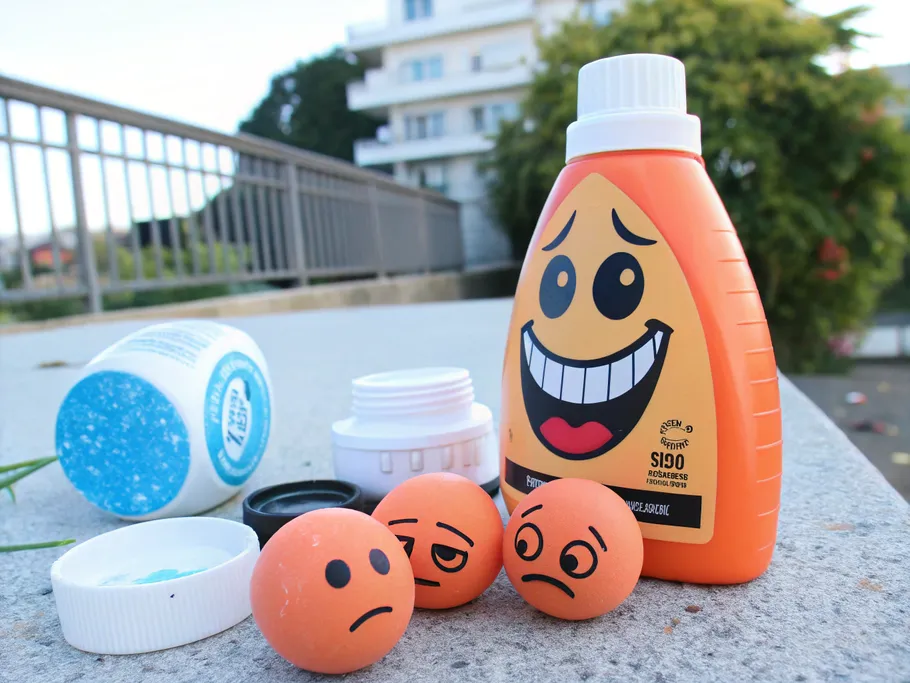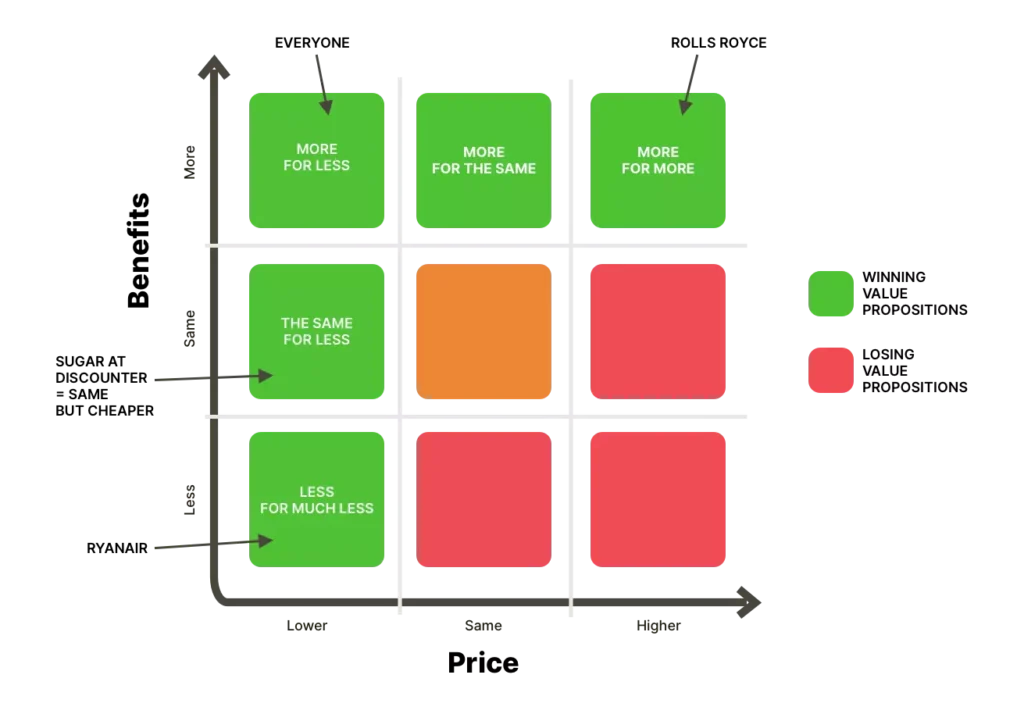Guess what?
Making customers fall head over heels for your product is all about nailing the marketing.
Yup, you need to be a product-mind-reading wizard who can get inside your target audience’s head and make them pat themselves on the back for choosing your product.
Emotions play a massive role in user engagement and loyalty to your brand. Research shows that a product that makes its customers feel awesome means 40%—yes, 40%—would miss it terribly if it disappeared. It’s like imagining a world without pizza. You want your product to be that vital in your customer’s life story.
Having a compelling brand story becomes the origin myth for the superhero that they’re about to own.
But how can you BUILD this superhero? You can’t market something if you don’t prioritize product development first!

Okay, so you want to launch a startup, but how to make sure that you’re designing a product people will actually fall madly in love with? There are 5 main characteristics that the product must satisfy:
It’s not just about good reasons to buy your product, it’s about feelings too. Create strong positive emotions by nailing aesthetic qualities, but you don’t want customers breaking up with you for hurting their feelings, right? If it looks stunning but the price is too high or it doesn’t quite do what it should, people might just walk away.

This doc is gospel. It spells out the purpose, features, and behavior of your product so the whole team’s on the same page (literally). Skipping this step is like cooking a seven-course meal without a recipe.
You might be wondering how to make sure your idea really has legs and how to go from idea to product launch, so let’s go over the steps while still focusing on building those love vibes.

We’ve got a detailed guide on this, but let’s break it down:
I’ve also got a detailed guide that will help you launch your business in a structured way. It overviews the whole process from the clarity of the idea to the product solution, vision, and investment pitch.
Grab my 8D Framework eBook here. Oh, and it’s free, by the way.
Now let’s get back to the irresistible product.
Imagine a Product Terminator: a killer brand that enters your market and crushes all competitors. It has unlimited business muscles and a metal skeleton to defeat anyone who stands in its way. How does it get to be so awesome? This is a great brainstorming exercise to understand what exactly your brand needs to do. What will be your strategy to get the biggest market share and grow the fastest? As an entrepreneur, thinking outside the box is crucial to creatively handle market threats and pursue innovative and aggressive strategies. Be more like Arnie.
Like the French Revolution, the quality of execution matters more than the quality of the idea. How is your lowly startup going to come up with a better idea than a large company that has more market knowledge, more customers, more customer feedback, and more money? Stop dreaming. Large companies have more resources but move slower. You’re quick and nimble and can target the audience like Legolas on steroids. Get out there and do it!
Okay, you have some ideas, but you need to prioritize one great idea instead of spreading your resources too thin, like a bad jello sandwich. Analyze competitors, identify gaps in the market, and above all listen to as many people as possible about whether they enjoy using your product. Even your mom. Your idea can’t just be amazing for you. It has to resonate with lots of other people. Sounds simple? It is! Don’t forget it.
How are you going to go from fantasy land to real-world shit? Get your coloring pens, we’re gonna do some serious drawing up in here. Sketch the hell out of the product’s features and functions. Like Harold and the Purple Crayon, your picture might come to life (as long as you don’t have my illustration skills of making everything look like a penis). Other than that, weigh up the costs of materials and the potential market value of your product so that profits can still be made while remaining affordable.
Many entrepreneurs think too rationally about their USP or ideal Customer Persona. BIG. MISTAKE. Only useful or beneficial products sell? Ha, think again. Humans are irrational. We’re basically talking chimps. We don’t always behave rationally, we do what we enjoy, like junk food, TikTok, and rom-coms. Your product will be successful if people simply like it. Start thinking about emotions. Get in the head of a customer and consider the product features people might enjoy. Showcase and advertise those. People’s choices are driven more by emotions than logic. Logic is used to justify emotional decisions, whether they were good or not. Yes, humans are way more messed up than you think.
Building a prototype will take visualization to the next level and be the crash test dummy taking all the hits so your product isn’t smashed up big time the moment it’s launched. That’s right. You need to test the shit out of it. And don’t think you can nail your prototype the first time. It will be a continuous battle of gaining feedback from potential customers, working out the kinks, and doing it all over again. You want your MVP (minimum viable product) to become an MVP (most valuable player).
Oh no, where are you going to get your materials from? Welcome to the wonderful world of product procurement, where everything that could go wrong, will go wrong. Like finding the perfect barber for your weird hair, nail down those vendors. Business analysis goes hand in hand and should focus on the user experience. If it’s all about company needs, you’ve missed the boat. Like an annoying baby, customer needs come first.
Hang on. Isn’t it time to launch the product yet? Hold your horses, sunshine. Okay, you have a couple of working prototypes after testing the living hell out of them, so you are now officially ready for product development. Sounds scary? Well, it’s a bit like going through puberty, but without your mom inspecting your browser history. Before going into mass production and revealing your product to the world, you have a chance to test it in focus groups, make last-minute changes, and check that it meets safety standards.
Same goes for test marketing. How will you know that your marketing strategy will be a success unless you check first? This should cover everything from ads to packaging. Focus on how customers react and make changes accordingly. DO. NOT. RUSH. THIS. Launching should be like sending a man to the moon. You don’t want it to be like Apollo 1.
Having a great business strategy involves saying “no” to certain things so you have the resources to focus on what’s truly important. If you try to do everything at once, you end up not doing anything well. Want a diluted brand that’s like a watered-down beer? I thought not. You need to sacrifice things to have a workable strategy. Thought about what your business sacrifices and what you consciously don’t engage in? Do it now.
You want to hit launch day with a bang. Throw a wild party, go nuts, and hand out free subscriptions. Viral and SEO-optimized product posts, teaser videos, and launch countdowns on socials are great ways to get a buzz going and show off your brand story.
But the grind continues post-launch. Think long-term viability, life cycles, and ongoing customer journeys.
Focus on loss aversion in your marketing—people hate losing more than they love gaining. $100 causes more distress than the joy of winning $100. If you’ve found yourself crying in a casino at 3 in the morning, you know what I mean. Highlight how your product prevents losses and milk those fears in your USP.
Absolutely 😎.
The eBook is a step-by-step guide designed to show you EVERYTHING you need to know to start developing a product. If you have an idea, it’ll help you go from zero to having a fully launched and marketed product.
Check it out here:
I’m sure the 7 steps look great on paper, but we’re going to have to get technical for a second. Going from an abstract idea to a concrete design is no joke. So put your engineering hat on and listen:
Okay, you understand the 7 steps and how to engineer your product… but who the hell is going to do it? How are you going to avoid getting scammed by some Chinese factory?
Good question. First off, don’t just pick the first guy. Make sure they’re reliable. If they’re a freelancer, they must have a good track record, so take them in a dark room and examine them like an FBI agent.
Established providers, on the other hand, often come with better support and more experience. But still, don’t go for the cheap Chinese factory if they don’t understand your goals and are not willing to explain complicated processes (in English, preferably).
If you can, visit their manufacturing sites and get a good look at what’s going on there.
Once you’ve found a good manufacturer, don’t just shake hands and go home. You need clarity on everything – cost structures, production timelines, and quality assurance commitments.
Disclaimer: No Chinese factories were harmed in the process of writing this article.
Launching a new product is risky. Most fail but don’t give up. What’s bound to kill your chances is not thinking about the needs of customers enough before launching your product. Here’s the 5-category cheat sheet:

Apart from considering those needs, track the evolving needs of customers from discovery to purchase to use by creating a customer journey map (CJM). It provides a detailed approach to understanding and optimizing the customer experience, such as how potential customers find out about you, visit your website, and make a purchase decision. It also covers the emotional journey. Think that customers don’t encounter any difficulties with your product? Think again.
Optimize any touchpoint and you might find your edge, the competitive advantage you need to thrive and create loyal customers. Make the journey delightful—think flowers and chocolate, not stress and poor communication.
Shift your focus from yourself to your customers. If you stop focusing on yourself and start dedicating more attention to your potential customers and users, your problems will disappear, like a hangover after drinking a Coke. The art of conversation is to be a good listener, so just like on a date, focusing on the customer is going to make them feel special.
Part of having a customer-centered approach is making users feel awesome about themselves.
Badass: Making Users Awesome by Kathy Sierra focuses on a unique approach to product development and the user experience.
Full disclosure, I’m not getting paid to plug this book. God dammit. I should have got in touch with her 🙂 But seriously, this book is the bomb. Rather than just creating great products, the book is all about making users “badass” at whatever they do. Basically, the success of a product lies not just in its features and usability, but also in how effectively it helps users achieve their goals and become better at what they care about.
The key takeaways from the book are to keep the user’s journey from novice to expert in mind when designing your product and to support skill development through resources, challenges, and constant feedback. This way, users will love the product for helping them become badasses. Who doesn’t want to be a badass at making people badasses?
Okay, so you think you have a badass product, but how to make sure people have the same feeling? How to get the image of your product positioned in a nice warm part of people’s minds rather than in the dark recesses along with clowns, nuclear war, and celery?
The answer, my friend, is positioning.

There are 5 possible value propositions, so you need to decide which one to adopt:
Write what your position is in one killer sentence. Show that you know your target audience, what they need, and why you rock. Example: “For healthy chocolate lovers, Unchoc is a chocolate bar with zero calories.”
It’s like a chat-up line, so get it right. You don’t want to be that bumbling idiot at the bar making a fool of himself.
If you roll in your bed at night, unable to sleep, worrying that your customers will steal your precious idea… Why? Nevertheless, we got you covered.
Here are a couple of ideas you can use:
Emotions win purchases. Make hearts flutter by seeing everything through customers’ eyes.
Listen, cater, and engage.
Your product is a gift to them, not you. Pay attention to their needs and what makes them happy. Nail that, and you’re golden.
Remember, you’re not just building a product, you’re building a relationship with your customers.
P.S. Nope, I’m not making a dime off Kathy Sierra’s book recommendation. But read it. Exceptional stuff!
P.P.S. And grab my 8D Framework.

Email subscription is available ONLY TODAY (oh, okay, and tomorrow).
Surely, we respect your inbox! Unsubscription works every day.

We’d love to tailor your experience — which of these best describes you?